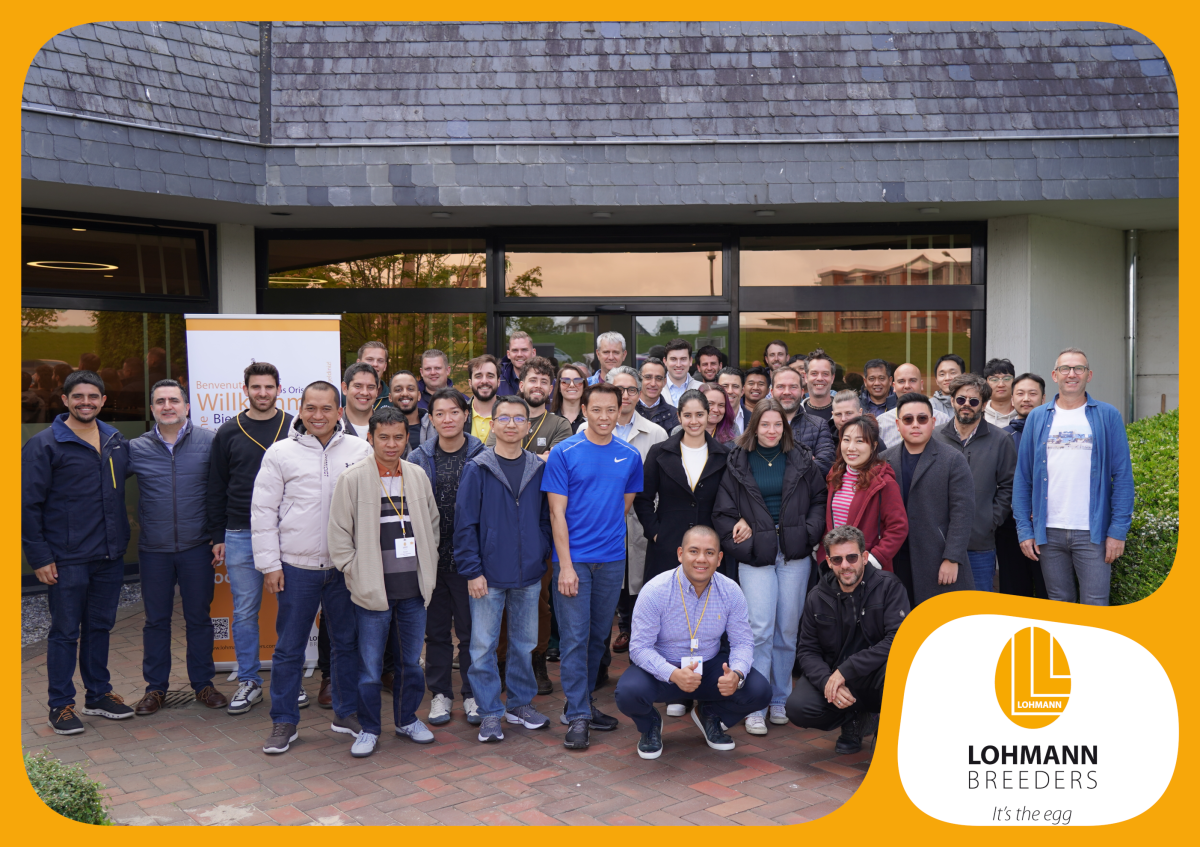The current analysis of production data captured from LOHMANN pure line layers highlights the enormous potential of these hens. The observation period covers up to 102 weeks of age. During this period with more than 500 observation days, the hens’ production cycle was analysed in detail. Egg numbers are recorded every day and also specifically for each individual hen. Peak Production Based on their average laying rate from 24 to 48 weeks of age, the layers were classified into 6 different groups. During this time, 84 % of the layers achieved an average laying performance
Peak Production
Based on their average laying rate from 24 to 48 weeks of age, the layers were classified into 6 different groups. During this time, 84 % of the layers achieved an average laying performanceTable 1: Distribution of hens in terms of laying performance at the peak of production

The categories shown in Table 1 were used to see the production development of these groups below in later stages of the production cycle of more than 90 %. Moreover, 22 % of the hens laid at least 171 saleable eggs in 175 days, which is equivalent to an average laying performance of at least 98 % (Table 1). This very high laying intensity is only possible by having just a few number of days without oviposition. There was even a group of layers in the flock that produced 175 eggs in 175 days, which means a performance level of 100 % over 25 weeks. Producing one saleable egg with a good eggshell, every single day, and at almost the same time of the day, is the biological limit!
Production Cycle of up to 102 weeks of age
55 % of the layers in this particular group were constantly producing above the standard throughout the entire production cycle. Even the layers in the group with a laying performance of between 90 and 94 % that were producing slightly below the standard level during the first 25 weeks, were quite persistent in laying. Consequently, in the second part of production, this group of layers went over the standard production curve. Therefore, the first conclusion is that only a small percentage of the layers in a flock, i.e. 16 % of the same, lay below the standard performance curve of LOHMANN TIERZUCHT (Figure 1). From the first egg at 21 weeks on right up to 102 weeks of age, many layers were producing in big clutches. For 8 % of the layers, at least one clutch was bigger than 180 eggs. Laying 180 eggs in sequence corresponds to a time frame of six months in which the hen laid an egg every single day without pausing. The average laying rate of these hens was 96 % during 574 days of
Figure 1: Laying performance curves for layers in different laying performance categories
production. A minimum clutch of 90 days, i.e. three months in a row, was achieved by 46 % of the layers. Eggs that were produced in such big clutches were even better in eggshell stability than eggs that were produced in smaller clutches (Table 2). Additionally, there was a group of 3 % of layers in the flock that had a very irregular laying rhythm with less than 30 eggs in one sequence and a distinctly smaller egg weight than the average. It seems like these layers could not find an optimal laying rhythm. To sum up, the majority of the layers (i.e. 97 % of the flock), were laying eggs in clutches of more than 30 eggs on a very high level of egg quality. To highlight the outstanding production level of LOHMANN layers, the average and the range of the maximum clutch size for the different production groups are shown in further detail in Table 3. As it can be seen, there is a great variation in the largest clutch of individual layers within the different production groups. Layers that produced at their biological optimum during the peak of production, reached clutches of up to 400 eggs. Laying 400 saleable eggs in 400 days is hard to beat. However, there were also hens that had an excellent average laying performance of more than 98 % with a variation in their biggest clutch size ranging from
Table 2: Average laying rate and egg quality traits in regard to the biggest clutch of a hen


Figure 2: Distribution of hens by their biggest clutch size
64 to 343 eggs. If the biggest clutch amounted to 64 eggs, then the respective hens were producing in very constant clutch sizes. However, normally most of the layers that produced above the standard showed certain variation in their clutch sizes. Most of the hens started to lay in short clutches at 21 weeks of age and prolonged their length rapidly from one clutch to the next.
Contrary to the large clutch size, the number of days without oviposition between two clutches mainly takes just one day. Producing saleable eggs in such big clutches with only one day off in between, requires a very controlled diurnal cycle and results in enormous laying rates that apply for the majority of LOHMANN layers.
Taking the analysed production data into consideration, it can be concluded that LOHMANN layers are prepared to lay eggs on a very high level during a long production cycle of more than 100 weeks. Most of the hens in a flock lay eggs in long clutches and only take one day off in between two consecutive clutches thereby producing one egg almost every day. To achieve this level of performance, feed and water have to be supplied in a very consistent quality and amount every day.
Dr. Wiebke Icken
Table 3: Variations in the biggest clutch of individual layers in different performance categories








